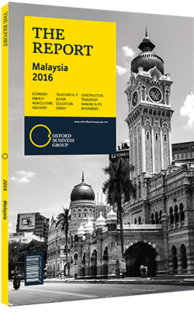Melvin Disimond, CEO, Kota Kinabalu Industrial Park (KKIP): Interview

Interview: Melvin Disimond
How crucial is the expansion of Sapangar Port to advancing Sabah’s economic development?
MELVIN DISIMOND: It is one of the last pieces in the puzzle in establishing Sabah’s investment platform. The state’s power generation challenges have largely been addressed, as has the need for industrial land, and now, with the expansion of the port, we will be addressing concerns about the cost of doing business. By enhancing the port and accompanying facilities we expect to see the speed and cost of imports and exports improve significantly. However, to make this a reality we need consistent government support in designating Sapangar Port as a hub that addresses the shipping legislation and other challenges. Under the 11th Malaysia Plan there is a scheme to upgrade the port, which is keenly anticipated by all sectors.
There is limited land available near the port so KKIP has agreed, in principle, to reserve a certain area within our park to cater to their excess demand and support their facilities, which will be a major focus going forward. There is also significant ocean traffic nearby, and so the first step is looking at trans-shipment, but later we would like to add value to these goods. We have around 500 acres where we can establish facilities to do this. Halal certification also holds high potential in Sabah.
In which niche industries do you see the greatest potential for growth and development?
DISIMOND: We see great potential for the development of an aerospace cluster focused on aircraft maintenance, repair and overhaul (MRO). The first concrete step was the memorandum of understanding we signed recently with Lembaran Asia Sdn Bhd (LASB) for development of an aerospace training centre at KKIP. The centre is a collaboration between LASB and Lufthansa Technical Training, and will have an initial annual capacity for 250 students. The programme will serve not only to create jobs for the state, offering an excellent opportunity for Sabahans to obtain an internationally recognised certification, but also to catalyse the creation of a local MRO industry. We are also working with the Malaysian Automotive Institute to identify segments within the auto industry in which we could play a role as a distribution hub for the East ASEAN Growth Area, while also targeting assembling and manufacturing at some point in the future. We are keen to capitalise on the spinoffs from logistics and trans-shipment, while continuing to focus on resource-based downstream industries and import substitution industries. We also see great potential for the development of the biotech industry. Bio-tech is another venture we are now working on in collaboration with Malaysian Biotechnology Corporation. We are identifying Sabah’s potential and how to target investors. We are also collaborating with Sirim on this venture. To attract investors we need to identify a development roadmap.
What do you see as the key bottlenecks to the development of Sabah’s value-added industries?
DISIMOND: One of the main hindrances in Sabah has always been infrastructure. More needs to be done to enhance our infrastructure, from ports and electricity to roads and water supply. In terms of human capital, it is important to start changing young people’s mindsets in regards to technical and vocational education and training (TVET). Part of what the Ministry of Industrial Development is doing is trying to convey to students the job opportunities that can be opened up with TVET. There are significantly better prospects within some industries provided students equip themselves with the necessary skills. Initiatives like the aerospace training centre being established at KKIP will also certainly help to provide employment opportunities.
You have reached the limit of premium articles you can view for free.
Choose from the options below to purchase print or digital editions of our Reports. You can also purchase a website subscription giving you unlimited access to all of our Reports online for 12 months.
If you have already purchased this Report or have a website subscription, please login to continue.

